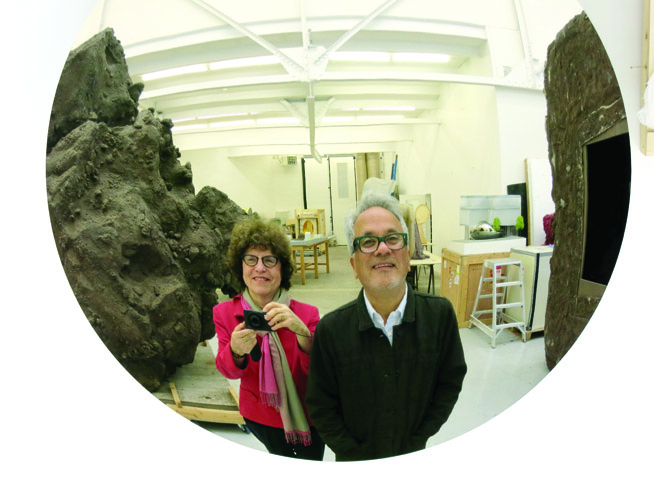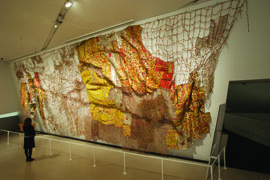Profile: Canada's First Lady of Literature

Eleanor Wachtel is a Canadian writer and broadcaster, and host of the CBC Radio’s popular literary show Writers & Company. Over the 26 years Wachtel has been hosting her show, she has interviewed some of the most compelling figures in Canadian literature, including Saul Bellow, Alice Munro, Michael Ondaatje, and Mordecai Richler. Wachtel is renowned for turning the traditional interview into an in-depth portrait of her subject. She was described by Kazuro Ishiguro (author of The Remains of the Day) as “one of the very finest interviewers of authors I’ve come across anywhere in the world.”
What inspired your first visit to the ROM?
I first visited the ROM in the late summer of 1965, with my older sister; we were tourists from Montreal. It was where she met her future husband—well, she’d known him slightly from McGill University, but it was where they first began to go out. I remember sitting outside in what was the Asian sculpture garden, reading from a pamphlet on Zen Buddhism. The ancient cultures, especially art from China, remain one of my favourite areas of the Museum. I was thrilled when, 20 years ago, the T.T. Tsui Galleries of Early Chinese treasures—bronzes, pottery figures, porcelain, etc.—opened, featuring a new, meditative space inside the Museum. Some of my favourites are the pair of earthenware dancers from the Eastern Han Dynasty (50–150 CE) and the men playing a game called liubo, which seems like an early form of Go, combined with throwing out six sticks that are then neatly aligned. As the signage indicates, “the exact rules of the game are no longer known,” but I enjoy these depictions of playful activities.
Not surprisingly perhaps, given what I do, I’m also taken with the arrangement of three storytellers from Sichuan province. I especially like the expression of the listener on the left, though all three communicate such pleasure.
Do you have any other favourite objects in the Museum that stand out to you? Maybe something you would like to have in your own home?
There are many objects I’d love to have in my home, almost too many to contemplate, but I think the lead-glazed earthenware from the Tang Dynasty (700–750 CE) would fit nicely among my English, Italian, and Mexican plates.
More recently, I was an enthusiast of Pompeii: In the Shadow of the Volcano, which also included extraordinary images of masks and representations of theatre.
Are there places in the Museum you find yourself coming back to visit?
When I moved to Toronto in the late 1980s to work fulltime at CBC Radio, I would visit the ROM to see the huge totem poles that filled the staircases near the Queen’s Park entrance. At that point, I’d been living in British Columbia for 12 years and was reluctant to leave, so seeing these Nass River mortuary poles was, in a peculiar way, a sign of home.
What word can be used to describe your experience at the ROM?
If I were to use one word to describe my experience at the ROM it would be “discovery.”
Do you visit other museums and galleries when you travel? Could you tell us what you like about a favourite?
When I travel, I always visit museums and galleries—too many to have a favourite—but I do like going to house-size collections, reflecting the personalities of their original owners.
You mentioned you discovered you had a unique connection to a Ghanaian artist at the ROM.

I’ve also had the opportunity, through my arts program, Wachtel on the Arts, to meet artists from Anish Kapoor to Richard Serra, William Kentridge to Taryn Simon, so I was delighted to come across an aluminum-and-copper wire installation at the ROM by the Ghanaian artist, El Anatsui.
Originally published in the Summer 2016 issue of the ROM Magazine.
